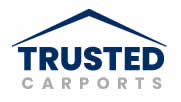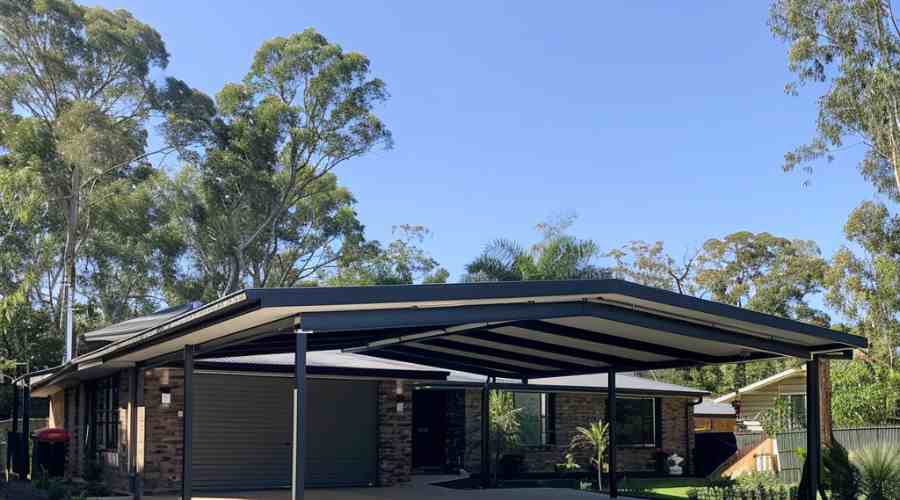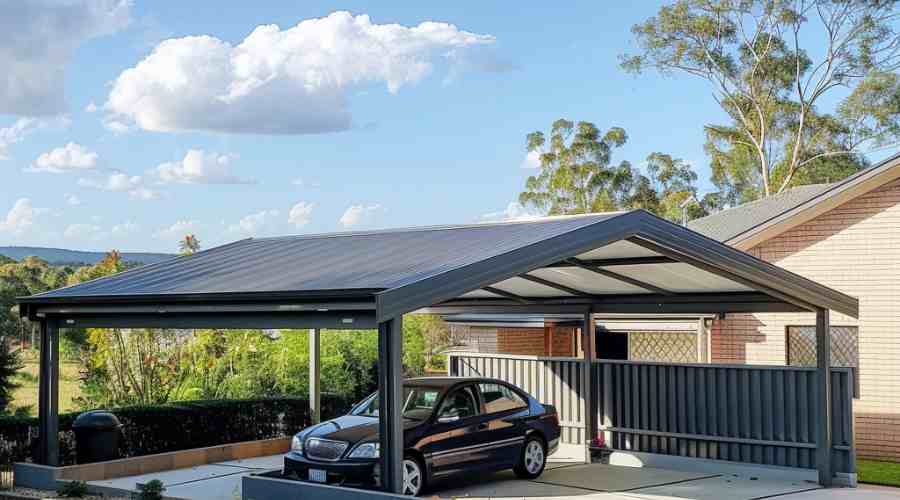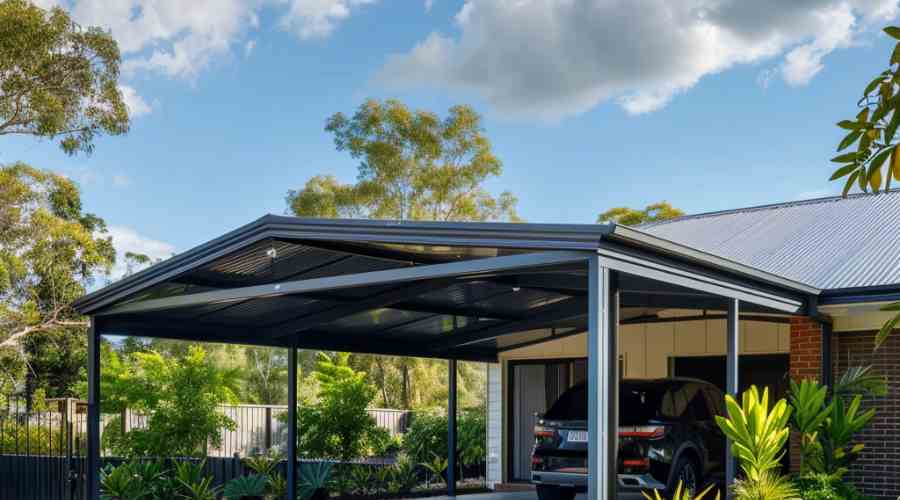The Carport Building Materials
Pros and Cons Of Common Carport Materials in Australia
Choosing the right materials for your new carport is an important decision that will impact its look, durability and maintenance requirements. Investing time to understand the pros and cons of various popular options will ensure you select materials suited to your climate, budget and aesthetic preferences. This guide provides a helpful overview of key carport building materials to consider for your project.
Benefits Of Choosing The Right Carport Materials
Selecting appropriate carport materials provides many benefits:
- Enhanced Durability – Materials like steel, timber and Colorbond withstand the elements better than fabric or plastic, resulting in longer lifespan.
- Lower Maintenance – Materials like brick, timber and metal sheet cladding require less ongoing maintenance than rendered concrete or natural wood.
- Visually Appealing – Materials like stone, timber and decking allow you to create an attractive, architectural carport that complements your home.
- Comfort & Protection – Using solid materials provides better shelter from sun, rain and wind than open or fabric structures.
- Cost Effective – Choosing materials that balance durability and visual appeal is key to getting value for money and avoiding costly repairs or replacements.
Popular Carport Building Materials in Australia
There is a wide range of materials suitable for carport construction. Here is an overview of popular options, along with pros and cons of each:
Colorbond Steel Sheeting
Pre-painted steel sheeting made from zinc, aluminium and magnesium alloy-coated steel for extra corrosion protection. The most common metal carport material.
Pros
- Durable, long lifespan of 15-30 years
- Low maintenance
- Wide range of color options
- Lightweight but sturdy
- Quick and easy installation
- Relatively affordable
Cons
- Can be noisy during heavy rain
- Prone to dents from hail damage
- Can fade over time from sun exposure
Timber – Treated Pine
Pine timber treated with chemicals to resist rot, fungi and termite attack. A versatile, traditional carport material.
Pros
- Naturally beautiful appearance
- Available in variety of shapes (sleepers, posts etc)
- Easy to cut, shape and paint/stain
- Relatively lightweight
Cons
- Prone to splitting, warping, twisting
- Ongoing maintenance like re-staining needed
- Can leach chemicals into soil so don’t use where edible plants will grow
Brick
Walls constructed from clay or concrete masonry bricks and mortar. A robust material choice used to match house.
Pros
- Very strong and durable, lifelong lifespan
- Low maintenance
- Matches existing brick houses
- Resists dents, fire, water, heat, noise
Cons
- Heavy structure requires concrete slab base
- High material and construction costs
- Coping for roof sheeting can leak over time
Natural Timber – Hardwood
Durable timbers like spotted gum or ironbark custom-cut for posts, beams etc. Beautiful but high maintenance option.
Pros
- Stylish natural appearance
- Can be cut to custom lengths or shapes
- Highly durable, 20+ year lifespan
Cons
- Very high purchase costs
- Ongoing maintenance staining/oiling
- Prone to splitting from weather exposure
- Termites can attack untreated timber
Rendered Concrete
Concrete slab or posts rendered with textured acrylic mix coating. Durable but higher maintenance option.
Pros
- Strong and supportive base
- Matches modern rendered houses
- textured render resists mould/dirt
Cons:
- Heavy, requires good drainage
- Hot in summer, cool in winter
- Prone to cracking over time
- Render requires painting every 8-10 years
Plastic Sheeting
Corrugated bitumen or plastic sheeting made from polymers like vinyl or polycarbonate plastic. Lower cost but less durable option.
Pros:
- Very lightweight, easy DIY installation
- Translucent options provide natural lighting
- Relatively affordable material costs
Cons:
- Prone to UV damage, fades over time
- Can crack/shatter in hailstorms
- Less fire resistant than metal sheeting
- Much lower lifespan of 5-8 years
Fabric Structures
Lightweight carport frames clad with durable woven polyethylene fabric. Very affordable but offers less weather protection.
Pros:
- Very lightweight aluminium/steel frames
- Easy DIY installation
- Cheapest upfront carport cost
- Various neutral color fabric options
Cons:
- Minimal rain, sun and wind protection
- Fabric fades, sags over time
- Less durable than solid materials
- Short 5-10 year average lifespan
Stone
Structural stone like granite or limestone blocks mortared together. Highly attractive but very expensive option.
Pros:
- Natural aesthetic appeal
- Lifelong lifespan, low maintenance
- Fire, rot and termite resistant
- Handles all weather conditions
Cons:
- Very heavy, needs engineered base
- High material purchase costs
- Hard to cut or shape stones
- Slow installation by masonry experts
Comparison of Popular Carport Building Materials
| Material | Durability | Maintenance | Cost | Appearance |
|---|---|---|---|---|
| Colorbond | 15-30 years | Low | Moderate | Modern metal aesthetic |
| Treated Pine | 10-15 years | Medium | Low | Traditional timber look |
| Brick | Lifelong | Low | High | Matches existing brick houses |
| Natural Timber | 20+ years | High | Very high | Stylish wood aesthetic |
| Rendered Concrete | 15-20 years | Medium | Moderate | Contemporary textured appearance |
| Plastic Sheeting | 5-8 years | Low | Low | Modern translucent look |
| Fabric | 5-10 years | Medium | Very low | Neutral colors |
| Stone | Lifelong | Low | Very high | Natural stone aesthetic |
What To Think About When Choosing Materials
When picking what stuff to use for your new carport, there’s a few things to keep in mind:
Weather in Your Area
Make sure to pick materials that can handle the weather where you live. Check if it works in heat, rain, wind and sun you get. Don’t want materials that fall apart quick.
Freestanding or Attached Carport
Decide if you want a separate carport or one joined to house. Get materials that work with what you pick. Think about how heavy they are and sizes for roof supports.
Ongoing Care Needed
Do you want materials that needs painting and staining a lot? Or lower maintenance like Colorbond and bricks? Don’t get wood or render if you hate painting.
What You Can Pay
Work out your budget first. Get some quotes from carport companies. If you haven’t got much money, focus more on stuff that lasts years over fancy ones.
Match Your Style
Make sure materials look good with your house design. Get colors and textures suiting bricks, wood, render or whatever already there. It’s gotta look good to you too and will give you more storage space!
Eco-friendly
If you want to be green, look for recycled materials like second-hand wood, sustainable pine from managed forests or even recycled plastic. Every little bit helps the planet!
Conclusion
Picking good materials for building your type of carport design means thinking about how long they’ll last, what they cost, how they look, and what’s best for the environment. The best choices for Australia are mostly Colorbond steel sheets, pine wood for posts and beams, bricks, or stuff matching what your house is already made from. When you can, spend a bit more for quality materials that’ll last decades without needing replacement. It avoids costly carport repairs down the track. This guide talks about the main pros and cons and things to keep in mind when choosing stuff to build your new carport.



